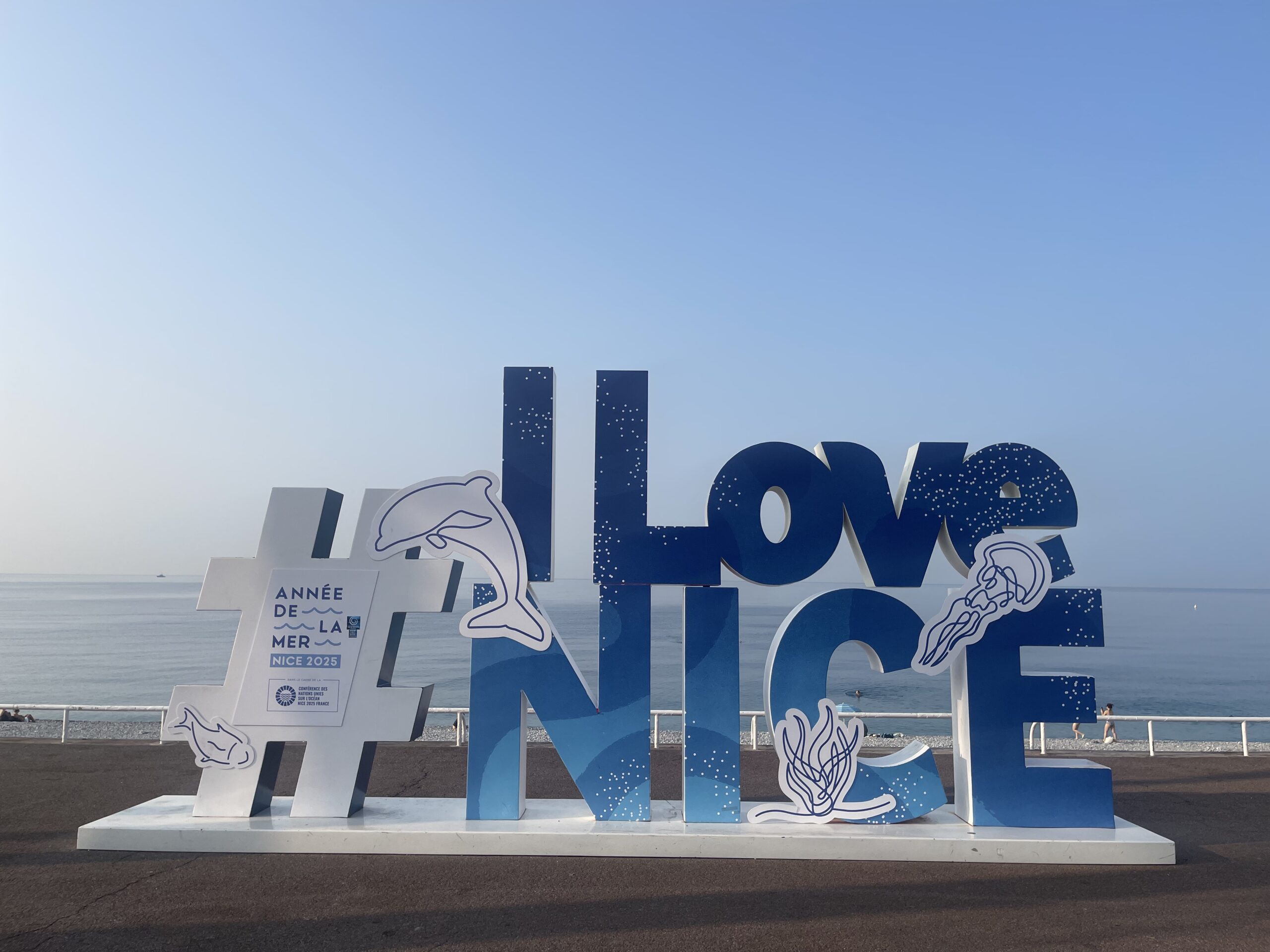Photo of Nice, France at night
The 3rd United Nations Ocean Conference (UNOC3) opened on Monday 9th June, kicking off a week of high-level dialogue and action. Focused on advancing SDG 14 – to conserve and sustainably use the ocean, seas and marine resources – the conference brings together world leaders, scientists, and marine advocates. On its very first day, the conference delivered a flurry of big announcements.
France announces vast marine protected area network
French President Emmanuel Macron took centre stage during the morning plenary to unveil one of the world’s most ambitious marine conservation pledges to date: the creation of a vast new network of Marine Protected Areas (MPAs), covering 4 million square kilometres of ocean territory. Of this, 900 square kilometres will be designated as highly protected, allowing for stricter preservation and biodiversity goals.
This move is being driven in partnership with French Polynesia and backed by the Te Moana Collective—a global coalition of influential ocean-focused organisations including Pew Bertarelli Ocean Legacy, Bloomberg Philanthropies, Blue Nature Alliance, Bezos Earth Fund, Oceans 5, Wyss Foundation, and Blue Marine Foundation.
Momentum builds against deep-sea mining
In another major announcement, both Macron and Costa Rican President Rodrigo Chaves Robles, confirmed that more than 30 heads of state and government have committed to a moratorium on deep-sea mining—a largely unregulated activity that has drawn widespread concern from scientists and environmentalists.
“The deep sea cannot become the Wild West,” warned UN Secretary-General António Guterres in a firm statement that underscored the urgency of halting destructive practices before they begin. The growing political consensus signals a significant shift toward caution and environmental oversight in international waters.
High Seas Treaty gains traction
Several leaders also used the morning session to declare their intent to ratify the High Seas Treaty, a landmark international agreement adopted in 2023 that aims to ensure the protection of marine biodiversity beyond national jurisdictions. Once fully ratified and implemented, the treaty will open the door to establishing large-scale marine protected areas in international waters—an area that constitutes nearly half the planet’s surface. Check the High Seas Treaty ratification tracker for the latest updates.
Australia to declare almost a third of its seas ‘highly protected’ in the next five years
Australia has announced plans to make nearly a third of its oceans highly protected “no-take” zones by 2030, banning fishing, mining, and drilling in these areas. The move includes reviewing 44 marine parks and ratifying the High Seas Treaty—part of a broader push to boost ocean biodiversity and climate resilience.
Pacific nations rally for ocean prosperity
The President of Palau took the stage to spotlight the Unlocking Blue Pacific Prosperity Plan, a collaborative initiative of 22 Pacific nations working together to manage and conserve their shared ocean resources. The plan represents a unified vision to blend traditional ocean stewardship with innovative conservation strategies, ensuring both ecological and economic resilience across the Pacific.
As the conference continues (see programme), early declarations have set a clear tone of both urgency and ambition.

